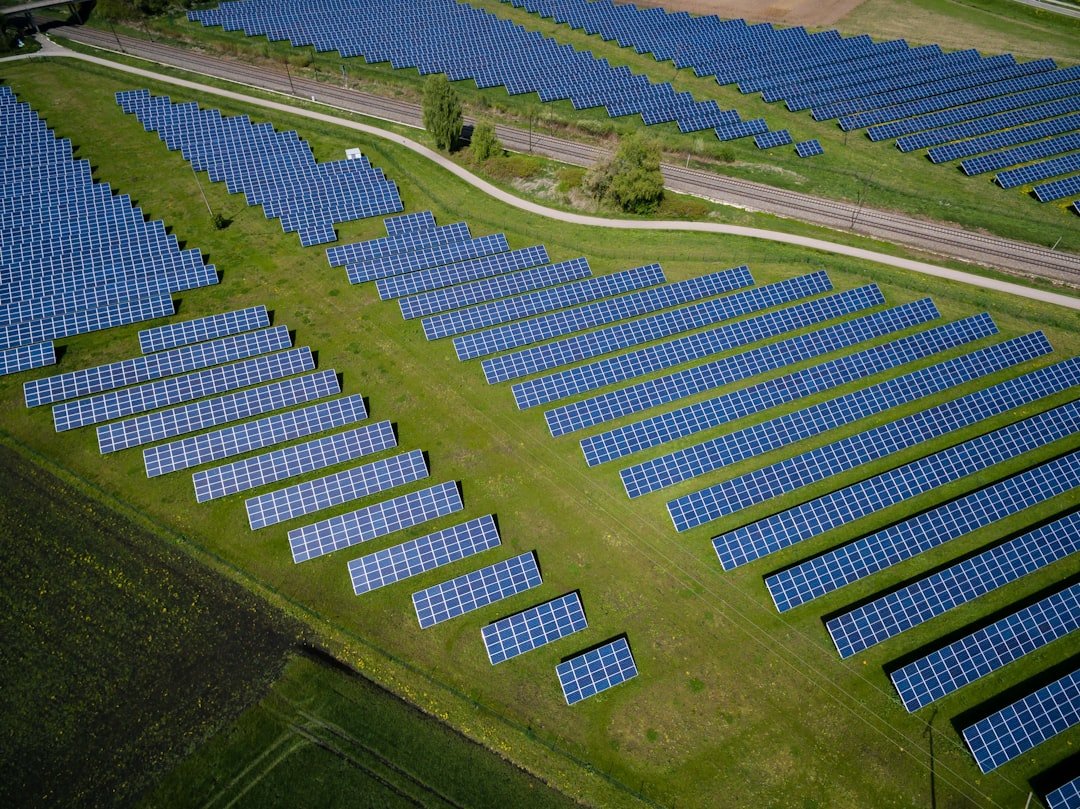The Greenhouse Gas Reduction Fund: A Detailed Overview The Greenhouse Gas Reduction Fund (GGRF) was created in California as a key element of the state’s aggressive climate change policy. The fund was established in 2013 with the goal of funding initiatives that would lessen greenhouse gas emissions and thus address the urgent problem of climate change. The state’s cap-and-trade scheme, which sets a cap on greenhouse gas emissions and permits businesses to purchase & sell allowances in order to satisfy their regulatory requirements, is the main source of funding for the GGRF. In addition to encouraging companies to lessen their carbon footprint, this creative strategy makes a sizable profit that can be put back into environmentally friendly projects.
Key Takeaways
- The Greenhouse Gas Reduction Fund is a key initiative in California aimed at reducing emissions and combating climate change.
- The fund is allocated and utilized for various projects and programs, including clean transportation, energy efficiency, and renewable energy.
- Successes of the fund include significant reductions in greenhouse gas emissions and the creation of green jobs and economic growth.
- Challenges faced by the fund include funding limitations and the need for continued innovation and adaptation to new technologies.
- The fund has had a significant impact on California’s emissions, contributing to the state’s overall reduction in greenhouse gas emissions.
- Future goals and initiatives of the fund include expanding clean energy infrastructure and increasing investment in sustainable development.
- Both public and private sectors are involved in the fund, with partnerships and collaborations driving its success.
- Lessons learned from the fund’s implementation can provide valuable recommendations for other states looking to implement similar initiatives.
The GGRF’s main objective is to support social justice and environmental equity while easing the shift to a low-carbon economy. The fund seeks to guarantee that the advantages of climate action are widely distributed throughout society by giving priority to investments in underprivileged communities. In a diverse state like California, where underprivileged communities frequently suffer the most from pollution and climate-related effects, this dedication to equity is especially crucial. By giving them the tools they need to adapt to climate change and prosper in a sustainable future, the GGRF aims to empower these communities through targeted funding. An accountability & transparency-focused strategic framework directs the distribution of funds from the Greenhouse Gas Reduction Fund.
The California state government uses a number of investment plans, influenced by scientific research & stakeholder input, to outline its funding priorities each year. These plans specify which industries and projects will be funded, from improvements to public transportation to renewable energy projects. The allocation procedure is intended to guarantee that funds are allocated to initiatives that simultaneously produce co-benefits like increased public health and job creation and the largest reductions in emissions.
The GGRF is used for a variety of projects that support California’s climate objectives. One example is the allocation of funds to expand public transit systems, encourage the adoption of electric vehicles, and improve the energy efficiency of residential and commercial buildings. Also, funds have been allocated to urban forestry initiatives that expand urban green spaces, which enhance community well-being and air quality in addition to sequestering carbon. The GGRF promotes sustainable development in a number of sectors & optimizes its effect on emissions reduction by diversifying its funding portfolio. California’s climate goals have benefited greatly from the Greenhouse Gas Reduction Fund’s noteworthy accomplishments since its founding.
| Year | Amount Allocated (in millions) | Projects Funded | Greenhouse Gas Reduction (in metric tons) |
|---|---|---|---|
| 2014 | 870 | Transit, Affordable Housing, Energy Efficiency | 3.2 million |
| 2015 | 832 | Public Transit, Sustainable Communities, Energy Efficiency | 3.4 million |
| 2016 | 900 | Low Carbon Transportation, Sustainable Communities, Energy Efficiency | 3.7 million |
| 2017 | 1,250 | Low Carbon Transportation, Sustainable Communities, Forestry | 4.2 million |
The state’s notable increase in the production of renewable energy is among its most notable accomplishments. The GGRF’s investments have made it easier to develop wind & solar energy projects, which has significantly reduced the need for fossil fuels. Because of this, California has become a leader in the production of clean energy, serving as a model for other nations & states attempting to tackle climate change. The GGRF has been instrumental in improving public transportation infrastructure in addition to advances in renewable energy.
Increasing the number of transit options, enhancing accessibility, and encouraging active transportation options like walking and bicycling have all received funding. These programs have encouraged healthier lifestyles among Californians in addition to lowering greenhouse gas emissions from private automobiles. The accomplishments of these projects highlight the value of integrated planning that takes community needs and environmental sustainability into account.
The Greenhouse Gas Reduction Fund has faced a number of obstacles that have limited its efficacy in spite of its achievements. The erratic nature of cap-and-trade revenues has been a major barrier, as it can lead to uncertainty regarding the availability of funding for long-term projects. Reduced revenue from carbon allowances may result from market dynamics or economic downturns, which could affect the capacity to fund important projects. To guarantee that projects continue to be feasible even in less advantageous economic times, this volatility calls for careful financial planning & flexibility. Ensuring underprivileged communities have fair access to funding presents another difficulty.
The GGRF gives priority to funding these areas, but for smaller businesses or local governments with little funding, navigating bureaucratic procedures can be intimidating. There is also frequently competition among projects for funding, which can result in differences in the distribution of funds. In order to overcome these obstacles, community stakeholders must be continuously engaged, and efforts must be made to streamline application procedures so that all qualified projects have an equal opportunity to be supported. The Greenhouse Gas Reduction Fund has had a major effect on California’s emissions profile.
Since its creation, the fund has helped several sectors see a quantifiable drop in greenhouse gas emissions. State reports show that California has continuously met its emissions reduction goals, & estimates suggest that it will reach its 2030 target of reducing emissions by 40% below 1990 levels. The GGRF’s strategic investments, which have sparked revolutionary shifts in land use, transportation, and energy production, are primarily responsible for this progress. Also, by focusing on innovation, the GGRF has sparked technological developments that improve efforts to reduce emissions.
The fund has contributed to clean technology advancements that have broad ramifications for California and beyond by supporting research and development projects. As a result of these innovations, a number of industries have adopted more sustainable practices, which will ultimately aid in the larger transition to a low-carbon economy. The Greenhouse Gas Reduction Fund hopes to expand on its achievements in the future while tackling new climate change-related issues. Improving resilience against climate impacts is one of its main long-term objectives, especially for marginalized communities that suffer disproportionately from extreme weather events.
The GGRF is also dedicated to supporting innovation in renewable energy and clean technology. The development of battery storage systems for renewable energy sources or more funding for research into carbon capture technologies are examples of potential future projects. Through a focus on innovation and resilience-building initiatives, the fund aims to establish California as a global leader in climate action while making sure that its tactics are flexible enough to adjust to a changing environmental environment.
In order to administer funds and create regulatory frameworks that direct investments toward worthwhile projects, government agencies are essential.
But the private sector’s participation is just as important; companies are frequently at the forefront of putting creative ideas that support GGRF goals into practice. This collaboration creates a vibrant environment where resources can be combined for greater impact & ideas can thrive. Numerous successful projects supported by the GGRF have resulted from public-private partnerships, ranging from community-based sustainability initiatives to extensive renewable energy installations.
In addition to improving project viability, these partnerships make use of other funding sources that can increase the impact of GGRF investments. California can continue to make significant progress toward its climate goals while generating economic opportunities for all by promoting an inclusive strategy that involves a variety of stakeholders. Other states looking to launch comparable programs can learn a lot from California’s Greenhouse Gas Reduction Fund experiences. One important lesson learned is how crucial it is to set precise objectives and success metrics early on.
Over time, states can more accurately evaluate the success of their investments by establishing clear emissions reduction goals and co-benefits like the creation of jobs or better public health results. Fair access to resources also depends on encouraging community involvement at every stage of the funding process. To lower barriers for underserved communities or smaller organizations, states should simplify application processes and give priority to outreach initiatives that inform prospective applicants about funding opportunities.
States can increase their chances of taking significant climate action by fostering an inclusive atmosphere where a range of voices are heard. In conclusion, California’s Greenhouse Gas Reduction Fund is a prime example of how to effectively combat climate change through community involvement and wise investment. Despite ongoing difficulties, its achievements show how creative thinking can spur emissions cuts and advance sustainability in a range of industries.
California’s experiences can help other states develop their own plans for addressing climate change & creating a more just future for all residents as they attempt to duplicate this success.
California’s efforts to reduce greenhouse gas emissions have been commendable, with the establishment of the Greenhouse Gas Reduction Fund being a significant step in the right direction. To further understand the greenhouse effect and its implications, one can read the article “Understanding the Greenhouse Effect in Greenhouses”. Additionally, addressing methane emissions from cows is another crucial aspect of combating climate change, as highlighted in the article “Curbing Cow Methane Emissions”. The interconnectedness of CO2 emissions and their impact on the environment is also explored in the article “The Impact of CO2 Emissions on the Environment”. By delving into these topics, individuals can gain a comprehensive understanding of the challenges and solutions related to greenhouse gas reduction.



